Yoga poses to help with menopause
A simple Iyengar Yoga practice for menopause support and relief. By Debbie Bartholomew
The menopause is a natural stage in a woman’s life, marking the end of the reproductive phase. It is often preceded by a perimenopause state which may last up to eight years.
Menstruation is instigated by a complex interaction of hormones secreted by the brain, the uterus and the ovaries. There are often increased levels of anxiety and depression, sometimes linked to poor sleep. An ageing digestive system can lead to lower absorption of nutrients leading to brittle bones, as the body leaches calcium from the bones to maintain blood calcium levels. Irritable bowel symptoms can also result.
A daily practice of yoga can help mitigate the effects of changing hormone levels and improve the quality of life for women during this time. Iyengar Yoga’s focus on correct alignment will help you to get the maximum benefit from your practice. In the Iyengar method, we like to sequence poses for different aspects of whatever condition is present. So, there are sequences for when hot flushes are a problem; when abdominal fatigue or abdominal tension is present; too frequent periods or too heavy periods.
Here, we have selected just a few poses which may help, but a sequence will help you more, even if you only have a short time to practice. Remember to align the pubic bone and coccyx and keep the abdomen soft.
STANDING POSE - Ardha Chandrasana
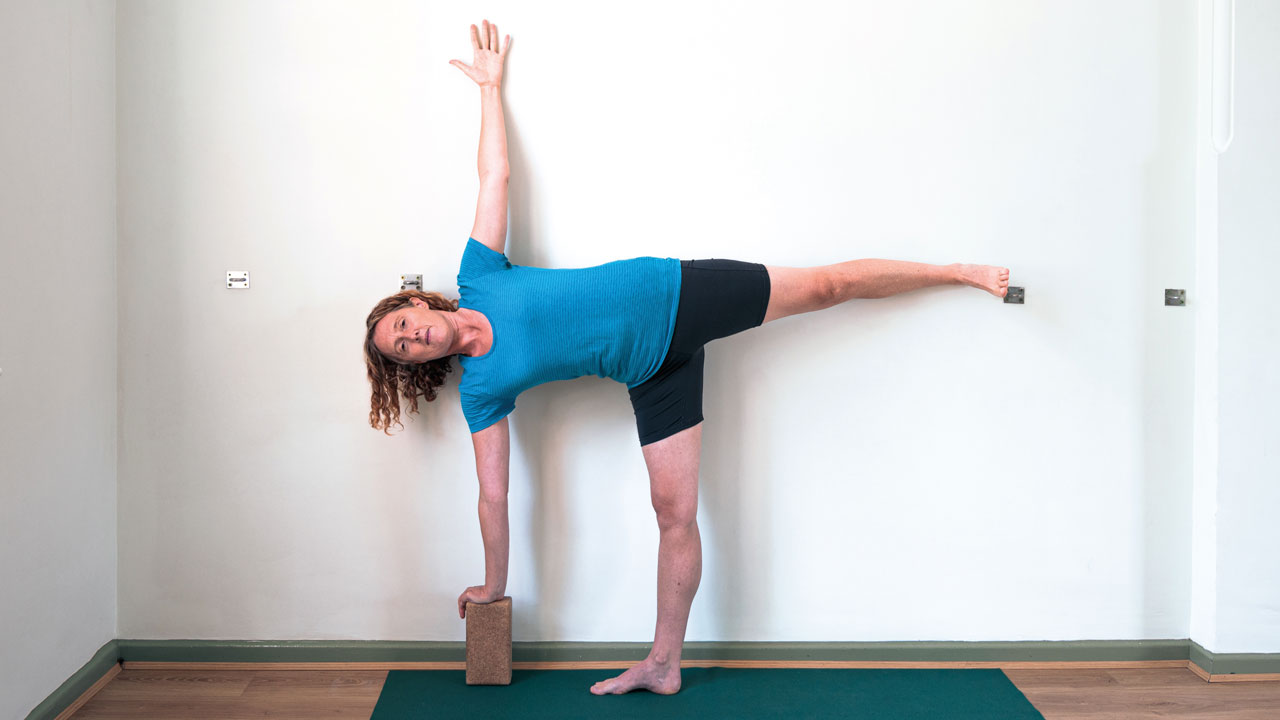
Take the support of the wall or the kitchen worktops at your back.
The standing poses are very important for maintaining bone density.
The use of the wall behind helps with fatigue.
The groins are open and if you take the top hand up it cools the veins in the groins and armpits. This pose helps to ease dryness, incontinence, urinary tract infections and bone density. It helps to open and soften the abdomen.
SEATED POSE - Upavistha Konasana
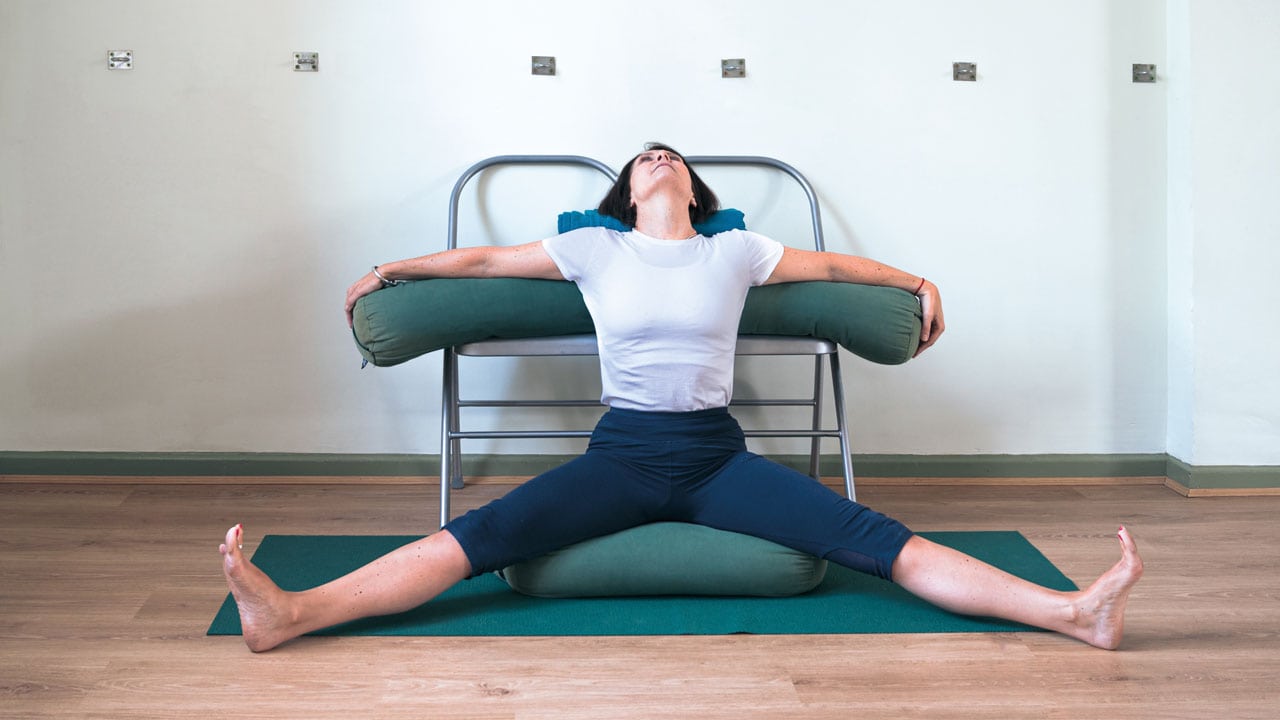
We’re showing the head lifted in this modification. One can use the sofa, or two chairs as we’ve shown here.
This pose helps combat the hardening of the groins and tightening of the hips which many women experience at this time. It helps with heavy blood flow and is beneficial for cysts, fibroids and dryness. It is such a cooling pose and helps with the blood circulation around the reproductive system.
SEATED FORWARD BEND - Paschimottanasana
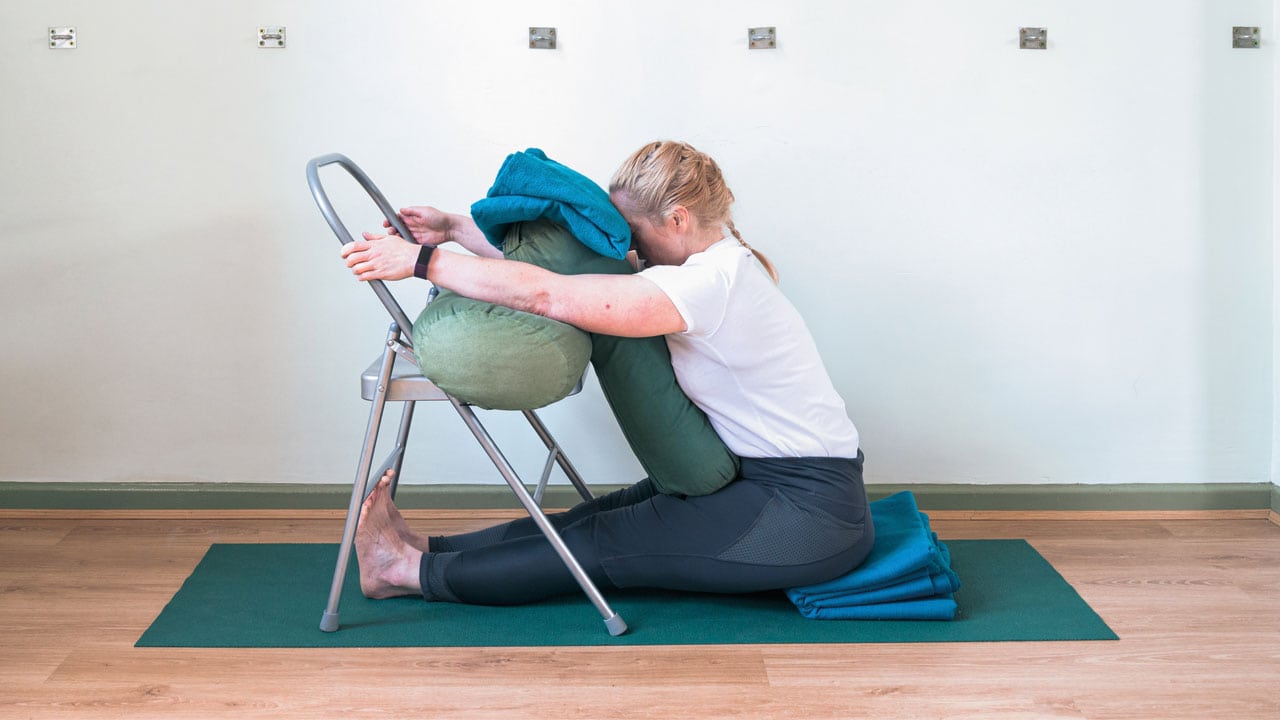
Coming forward to a bolster and chair.
This pose really soothes the mind and nervous system. It helps with incontinence and frequent urination. The head resting on the bolster helps with headaches. It’s a good pose to do just after bleeding to pacify the abdomen.
SUPPORTED BACKBENDS - Dwi Pada Viparita Dandasana
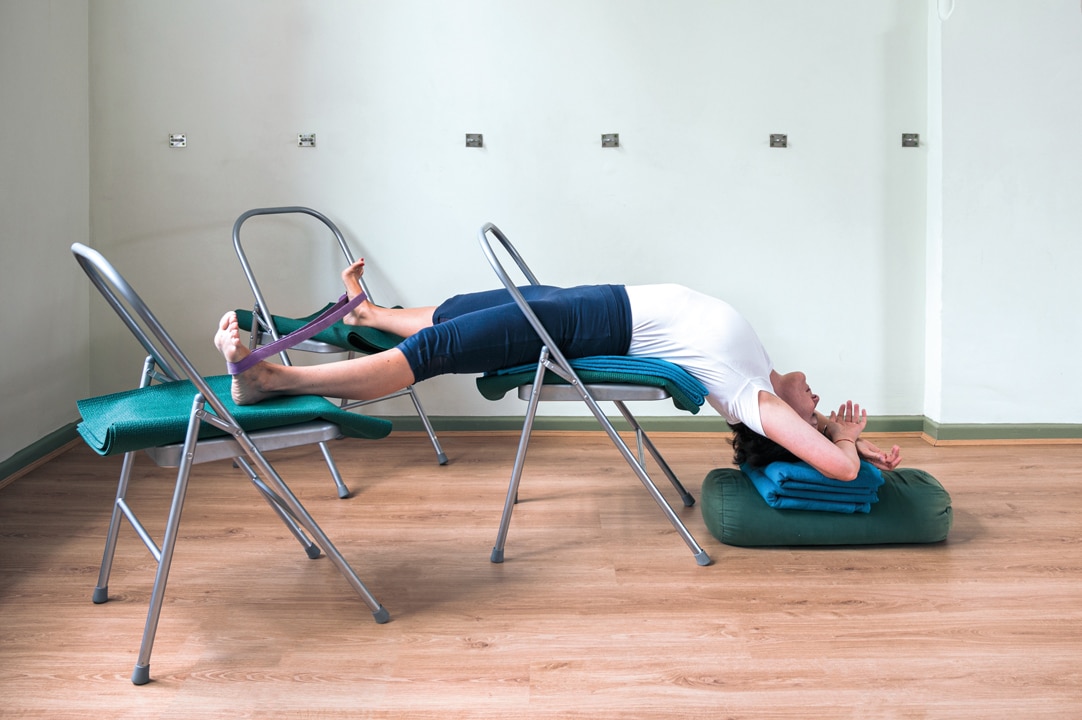
This pose can be done with three yoga chairs but alternatively you could go sideways on a dining chair or over a sturdy stool and have your legs on the settee.
Placing the crown of the head on the floor combats low mood and depression. This pose helps to settle the hormone imbalance, is good for insomnia and mental and emotional stability. It helps to maintain normal blood pressure.
INVERSION - Setubandha Sarvangasana
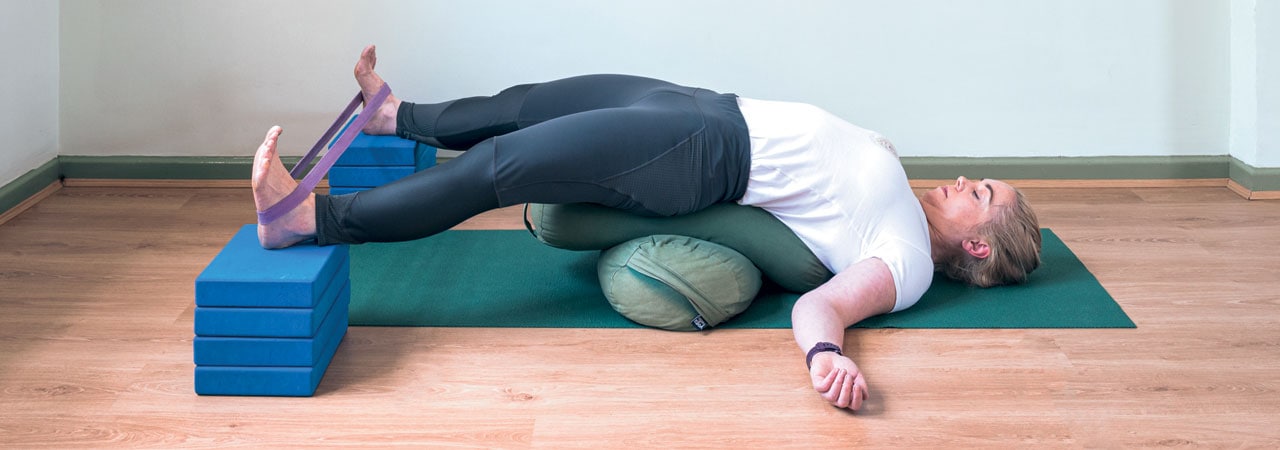
On cross bolsters with legs wide like Upavistha Konasana. The pelvis must be parallel to the floor (pubic bone parallel to the coccyx), see above. This pose is good for insomnia, mood swings, helps to maintain normal blood pressure, removes dullness and improves circulation.
We’ve shown the classic pose here with the back of the head on the floor. If you’re having hot flushes you can take more height under the head to bring the chin towards the chest like Jalandhara Bandha (chin lock). If you have a low mood and are feeling depressed, then take more height under the shoulders and allow the head to go back.
INVERSION - Viparita Karani, at the wall
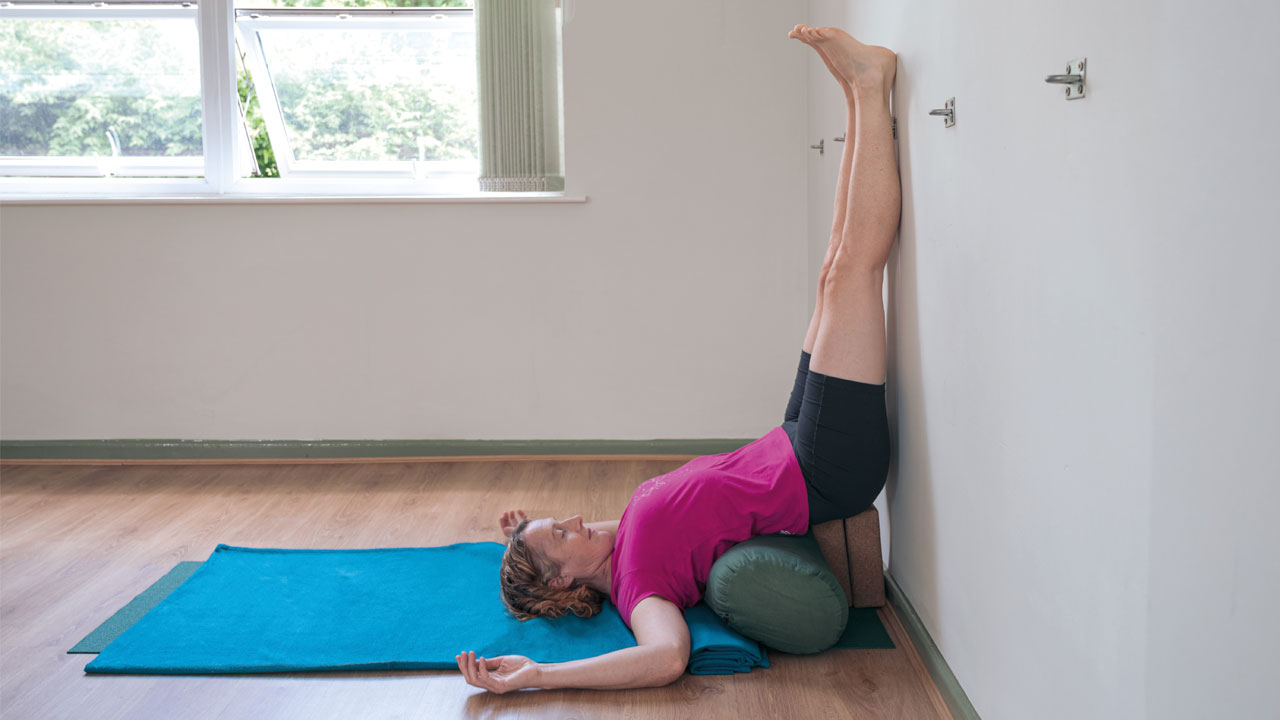
This pose helps with insomnia. It is very relaxing and quietens the mind.
SUPINE POSE - Supta Baddha Konasana
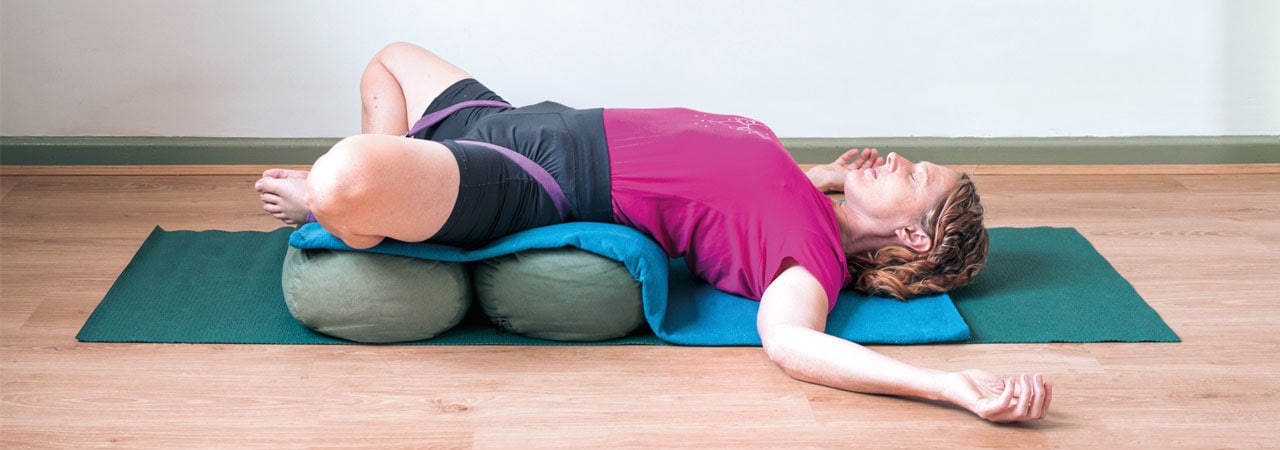
If you don’t have two bolsters you could take the seats from your sofa and use them instead. This pose is divine – a complete pose. The pelvis and groins are opened, backache is relieved. Bloating and abdominal discomfort is lessened. The crossed arms overhead cool you down. It helps to calm and relax the nervous system.
SUPINE POSE - Savasana – of course!
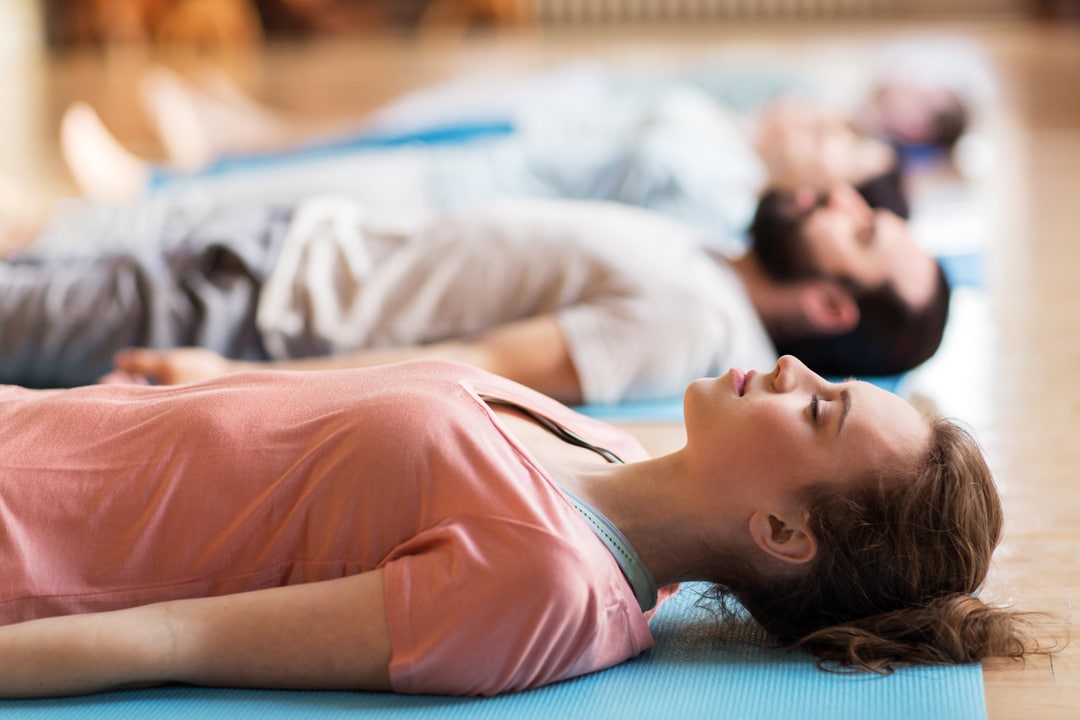
In all these poses it is important that the space between pubic bone and the coccyx, the pelvic floor, is parallel to the floor when standing and one on top of the other when lying down. The pubis should not drop towards the legs or tilt to the navel. The abdomen should be soft. Do more on the days you feel like you can and be kind to yourself on the days you can’t. Take time, this phase will pass. It’s best to practice under the guidance of a certified teacher.
Debbie Bartholomew is a senior teacher based in Manchester who has been teaching for more than 25 years and has been taught by B.K.S. Iyengar and Geeta S. Iyengar. Find your nearest Iyengar Yoga teacher at: iyengaryoga.org.uk


